Blackjack is one of the few casino games where skill truly matters. JILI Casino will guide you how to take advantage of its high RTP, low house edge, and strategic depth to maximize your real money wins. Whether you’re a beginner or a seasoned player, you’ll learn how to play smart, manage your bets, and make decisions that shift the odds in your favor.
Understanding Blackjack: A Game of Strategy, Not Just Chance
Blackjack is a fast-paced card game where the objective is to beat the dealer without exceeding a total of 21. Though the rules are easy to learn, the game requires a mix of timing, strategy, and mathematical thinking, making it one of the most skill-based games in any casino.
The game originated in 17th-century France as vingt-et-un, meaning “twenty-one”. At that time, the core rule was already in place: get as close to 21 as possible without going over. Many of today’s additional rules were introduced later.
When blackjack arrived in American casinos, a special payout was offered for a hand containing the Ace of spades and a black Jack (spades or clubs). That bonus created the name “blackjack” and helped boost the game’s popularity worldwide.
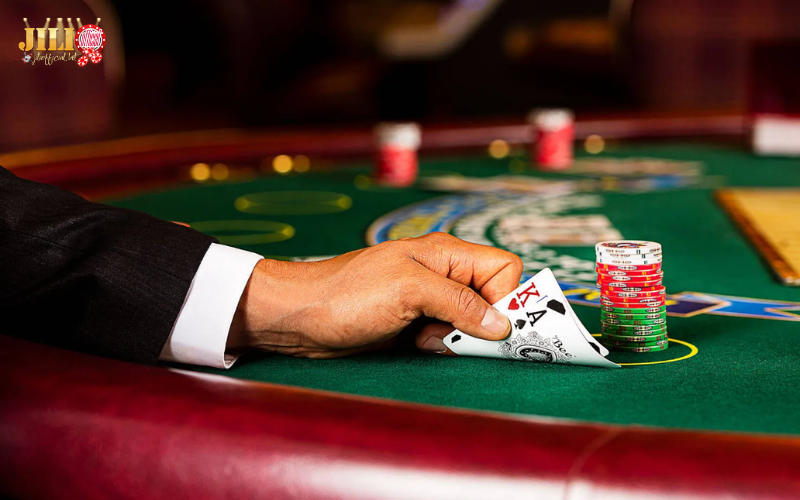
Unlike games of pure luck, blackjack rewards smart decisions. Knowing when to hit, stand, double, or split based on the dealer’s upcard can reduce the house edge to below 1%.
Whether you’re curious about its origins or ready to play blackjack for real money, understanding the game’s foundation is key. In blackjack, strategy turns knowledge into profit.
How to play blackjack
Blackjack begins when you place a bet and receive two cards. The dealer also gets two cards, with one face up known as the upcard. Your objective is to beat the dealer’s total without exceeding 21.
After the deal, you can choose to:
- Hit: Take another card.
- Stand: Keep your current hand.
- Double Down: Double your bet, take one final card.
- Split: If you have a pair, play them as two separate hands.
- Surrender (if allowed): Fold early and lose only half your bet.
The dealer follows fixed rules and must continue drawing cards until reaching at least 17. You win if your total is higher than the dealer’s without exceeding 21, or if the dealer goes over 21 first. A natural blackjack, which is an Ace paired with a 10-point card, typically pays 3 to 2. If both hands have the same total, the result is a push and your original bet is returned.
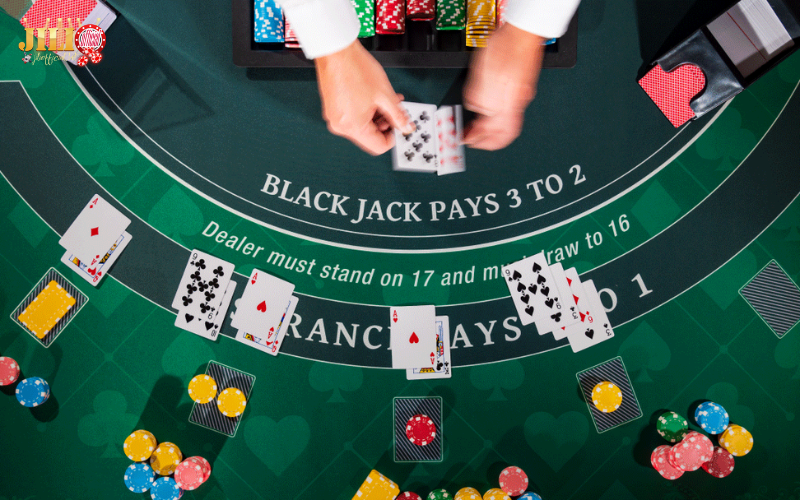
Blackjack rules every player must know
Mastering basic decisions like when to hit or stand is just the start. What sets experienced players apart is how they apply optional rules that shift the odds.
Online blackjack games often come with slight rule variations that impact the house edge. Learning these can improve your long-term results.
Key rule-based decisions that impact strategy
| Rule / Option | How It Works & Why It Matters |
| Split Pairs | When you’re dealt two cards of the same value (e.g., 8–8), you can split them into two separate hands. Best used when the dealer shows a weak upcard (4–6). |
| Double Down | You can double your original bet and receive exactly one more card. This move is most effective when your hand totals 10 or 11, as the chances of reaching 20 or 21 are significantly high. |
| Insurance Bet | This is a side bet offered when the dealer’s upcard is an Ace. It pays two to one if the dealer has blackjack. However, it’s generally not advisable unless you are using card counting techniques. |
| Surrender Option | At certain tables, this option allows you to fold early and lose only half of your original bet. It’s especially useful when you’re dealt a weak hand, such as 16 against a dealer’s 10. |
By understanding these rules and when to apply them, you gain more control and reduce risk, especially when paired with solid blackjack strategy.
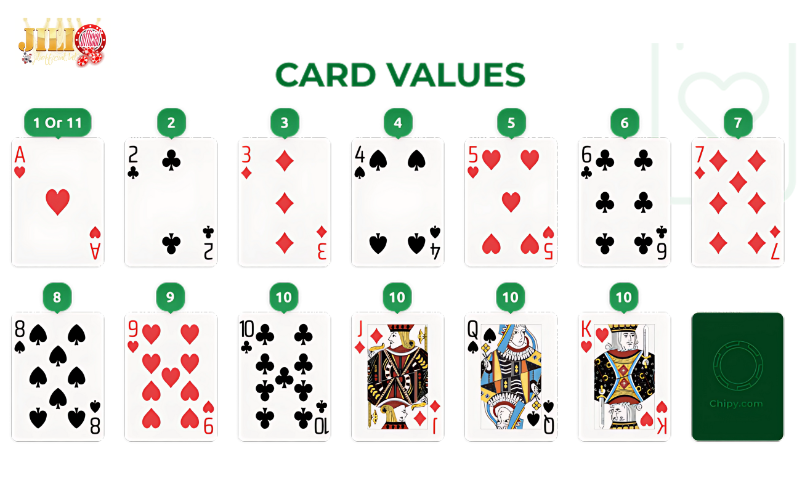
Blackjack Online: Play Anytime, Anywhere
Online blackjack has completely changed the casino experience. Instead of waiting for a seat or visiting a physical venue, you can now enjoy the game anytime, on any device, with full access, flexible betting limits, and instant play.
Live Blackjack vs. RNG Blackjack
- Live Blackjack brings real dealers, HD streaming, and live chat for players who want the feel of a physical table.
- RNG Blackjack (random number generator blackjack) offers full solo control. It is ideal for practicing your strategy, adjusting the pace of play, and replaying rounds without pressure.
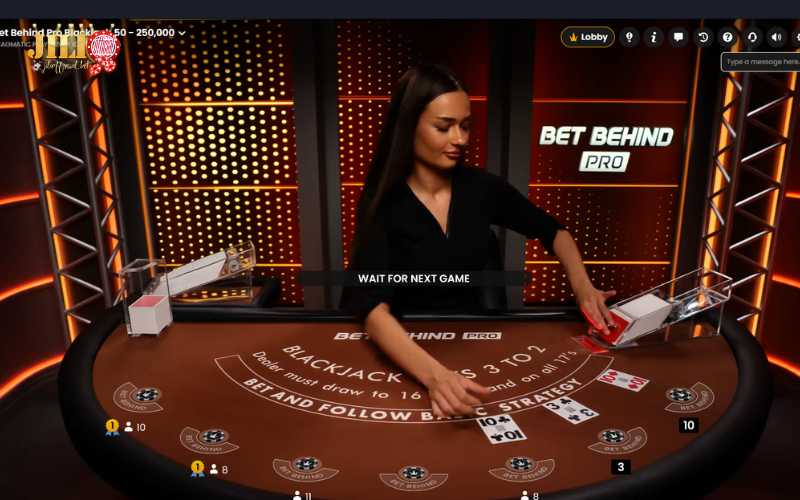
Mobile Play and No-Download Options
Modern blackjack apps on Android and iOS offer full functionality, including fund management, game switching, and practice modes. If you prefer not to install anything, browser-based versions let you start playing instantly without any downloads.
Whether you’re chasing real payouts or testing strategies in free play, online blackjack gives you the freedom to play your way at any time and from anywhere.
Understanding 21+3 blackjack
The 21+3 side bet in blackjack adds a poker-inspired layer of excitement. It’s based on a combination of your two initial cards and the dealer’s face-up card. If those three cards form a valid poker hand such as a flush, straight, three of a kind, or even a straight flush, you’ll win a bonus payout that can range from 5:1 to as high as 100:1 depending on the table’s paytable.
For example: Suppose you’re dealt 9♠ and 10♠, and the dealer’s upcard is Q♠. All three cards are spades, which forms a flush. If you placed a 100₱ side bet, you might win 500₱ or more, depending on the payout rules.
That said, while the potential rewards are appealing, the odds are not in your favor. The house edge on 21+3 bets typically ranges from 3% to 7%, which is significantly higher than the 0.5% or less found in standard blackjack when played using optimal strategy. In addition, side bets can distract you from the core game. This makes it harder to focus on important decisions such as hitting, standing, or doubling down, especially for new players.
If you’re simply looking to add some thrill and have a set entertainment budget, 21+3 can be fun in moderation. But if your goal is long-term profit or consistent performance, it’s best to treat side bets as extras and focus on mastering core blackjack strategy first.
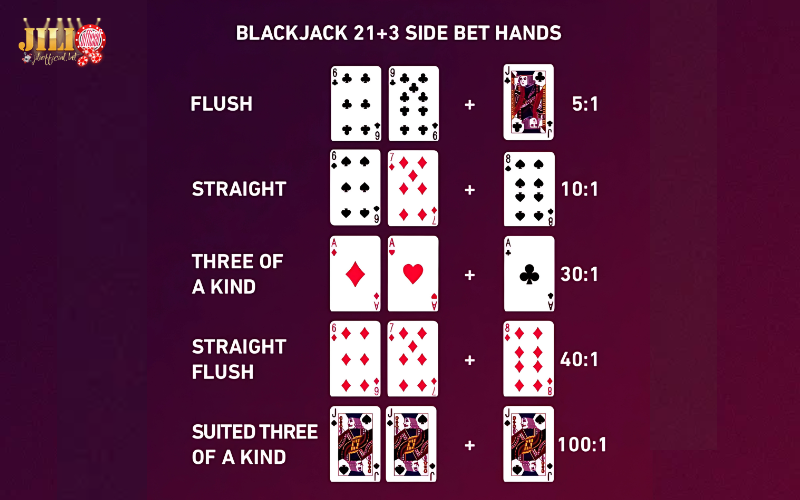
Blackjack Strategy: From Basic Charts to Pro Tips
Winning in blackjack comes down to more than luck. It’s about making the right decision at the right moment, following a tested strategy, and staying disciplined throughout the game.
A basic strategy chart outlines the statistically best decisions for each hand based on your total and the dealer’s upcard. When used correctly, it can reduce the house edge to under 1%, giving you a real advantage.
| Your Hand | Dealer’s Upcard | Recommended Action |
| 12 | 2 or 3 | Hit |
| 16 | 6 | Stand |
| 11 | Not an Ace | Double Down |
| 8 + 8 | Any | Always Split |
| Ace + 6 | 2–6 | Double if allowed |
Once you’ve memorized the basics, sharpen your play with these timeless tips:
- Always split Aces and 8s.
- Avoid the insurance bet – it favors the house.
- Stay consistent – don’t change strategy mid-game.
- Control emotions during losing streaks.
In blackjack, skill and patience win over time. Stick to the math, avoid guesswork, and play the long game.
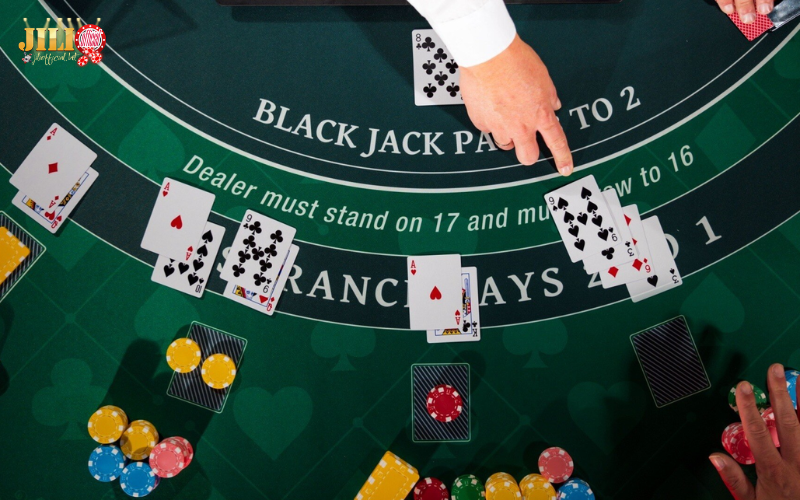
Betting tips and bankroll management
Knowing how blackjack works is just the beginning. To truly succeed, you need solid bankroll management because even the best strategy won’t save you from poor money habits. Blackjack is a game of edges and percentages, and your bankroll is what keeps you in the game long enough to let math work in your favor.
Set session limits that fit the flow of blackjack
If you’re playing at a P100 table, enter with a bankroll of at least P2,000. Decide in advance to stop when you are down 10 percent or up 25 percent of your total funds. This helps prevent long losing streaks, especially in multi-deck games where variance is more noticeable.
Bet with discipline, not emotion
Avoid going all in. Stick to 2 to 5 percent of your session bankroll per hand. For instance, with P2,000, your bets should stay between P40 and P100. This gives you room to double or split without risking too much in one round.

Only raise bets when the odds are in your favor
Increase your stake slightly when the dealer’s upcard is weak, such as a 4, 5, or 6. These situations give you a statistical edge. Never increase bets out of frustration after a loss, as this leads to reckless decisions.
Keep track of every session
Maintain a simple log of your bets, results, and key decisions. This helps you recognize emotional play, poor decisions, or consistent patterns where you’re deviating from optimal strategy.
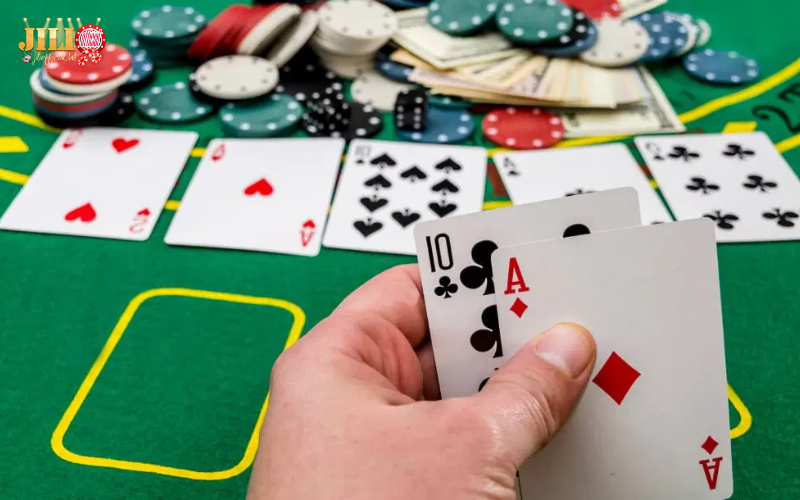
Blackjack odds, RTP and house edge explained
Want better results in blackjack? Then start thinking in numbers. The real edge lies in the math behind every hand.
Understand RTP vs House Edge
- RTP (Return to Player) refers to the long-term payout percentage. When played using basic strategy, blackjack can offer up to 99.5% RTP. It’s one of the highest among all casino games.
- The house edge is what the casino keeps. Depending on rules and deck count, it can range from 0.3% to 2%.
Even a 0.1% change matters. Over time, small shifts in edge can significantly affect your profits, especially during extended play sessions.
For instance, if you play 1,000 hands at P100 per bet, a 0.5% house edge results in an expected loss of P500. At 2%, that number jumps to P2,000. That’s the power of understanding your odds.
Deck Count and Impact on Odds
| Number of Decks | RTP (%) | House Edge (%) |
| 1 deck | 99.62 | 0.38 |
| 2 decks | 99.55 | 0.45 |
| 4 decks | 99.50 | 0.50 |
| 6 decks | 99.46 | 0.54 |
| 8 decks | 99.42 | 0.58 |
The more decks used, the slightly higher the house edge becomes. Always check game rules before sitting down.
Real Odds That Influence Play
- Busting on 16: ~62% chance
- Dealer busts with 6 upcard: ~42%
- Getting a natural blackjack: ~4.8%
These probabilities directly affect decisions like whether to hit, stand, or double down. When paired with smart betting, this data turns risk into advantage.
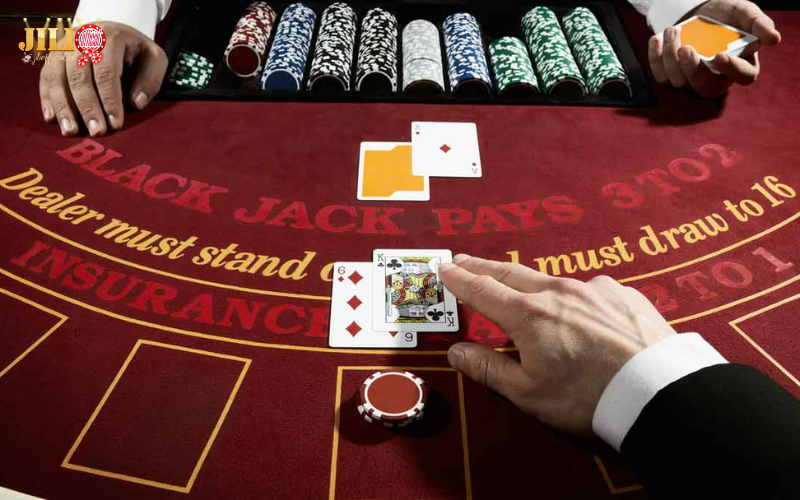
Advanced techniques: card counting and edge play
For players aiming to outsmart the house, blackjack offers tools beyond basic strategy. From card counting to rare observational tactics, these advanced methods can tip the odds slightly in your favor if applied correctly.
Card Counting: The Proven Skill Play
The most recognized technique is card counting, especially the Hi-Lo system. Here’s how it works:
| Card Value | Assigned Count |
| 2–6 | +1 |
| 7–9 | 0 |
| 10–A | –1 |
By tracking the running count, players can identify when the deck is rich in high cards, making it an ideal time to raise bets or anticipate a dealer bust. When executed properly, this strategy can reduce the house edge by up to 1.5%.
However, success depends on discipline and subtlety. Because casinos often discourage this technique, it’s important to stay discreet, especially when playing at live tables.
Rare but Real: Edge Sorting & Hole Carding
Beyond counting, two lesser-used tactics exist:
- Edge sorting: Detecting minor flaws or patterns on card backs to identify high-value cards. This only works in poorly maintained, hand-shuffled games.
- Hole carding: A technique where the player sees part of the dealer’s face-down card, often due to sloppy dealing or revealing camera angles.
While controversial, both techniques are legal in many regions as long as you don’t use devices or collude with dealers.
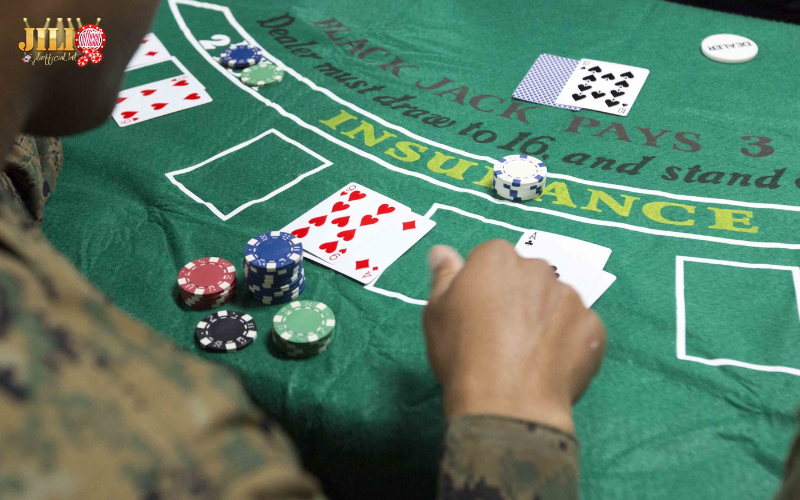
Blackjack Glossary: 10 Key Terms Every Player Should Know
To play blackjack confidently, whether online or live, you need to speak the language. Here’s a compact guide to the most important terms you’ll encounter at the table:
| Term | Definition & Example |
| Push | A tie. Your bet is returned.
You have 20. Dealer has 20. It’s a push. |
| Bust | Hand goes over 21 and automatically loses.
16 + 8 = bust (24). |
| Shoe | Device holding multiple decks, common in casinos.
Used in 6–8 deck blackjack. |
| Dealer’s upcard | The dealer’s visible card that influences your move.
Dealer shows 6? You may stand. |
| Soft hand | A hand with an Ace valued as 11.
Ace + 6 = soft 17. |
| Hard hand | A hand without an Ace, or Ace counted as 1.
10 + 7 = hard 17. |
| Stand | You stop taking more cards.
You hold 19 and stand. |
| Split | Dividing a pair into two separate hands.
Split two 8s to play both. |
| Double down | Double your bet and draw only one card.
You hold 11, draw 10 = 21. |
| Surrender | Forfeit half your bet to exit a weak hand early.
Best used on 16 vs dealer’s 10. |
Knowing these terms isn’t just about sounding smart. It helps you make quicker, better decisions. Whether you’re choosing to hit or stand, or reacting to the dealer’s upcard, the right terminology leads to sharper gameplay.
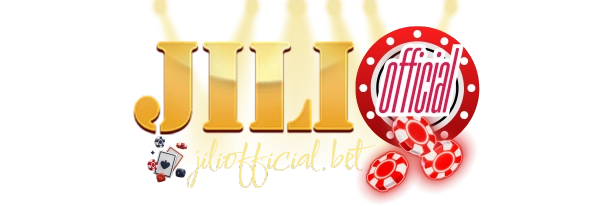
Jiliofficial is the ideal destination for anyone passionate about online betting, offering a smooth and completely secure experience.
Contact us
Address: Bldg. C Bazaar Area Metrowalk Commercial Complex, Ortigas Center, Pasig City, Metro Manila, Philippines
Hotline: +63 9221200437
Email: [email protected]
Website: https://jiliofficial.bet/
Hashtag: #jiliofficialslots #bestslotgame #jiliofficiallivecasino #jiliofficialbet